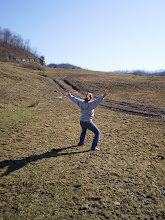In the stillness, space for a rebellious spirit
http://www.latimes.com/news/local/la-me-beliefs4-2009may04,0,5633757.story
Another good story! I really enjoyed reading this one. It definitely covered a lot of the news values, especially oddity: punk rock + buddhism = woaaaah. One thing I've noticed through out my reading of LA Times religion is that they definitely cover a lot of ground. I've read about religions from Wicca to Buddhism to Judaism to Catholicism, etc. I definitely think that LA Times covers all the bases fairly.
One thing that this story does really well is the "flow." It was incredibly easy to read and follow. The transitions from paragraph to paragraph and all of the information included fit together really well...I can't quite put my finger on why, but this story seems a lot less choppy then some of the other stories i have read. I think it might have something to do with the placement of quotes...A few pieces I have read from LA Times have a LOT of quotes, which is good, but not all of them fit with the flow of the piece and it can be a little bit jarring. (Like the piece on the survey a couple posts ago). But this piece only includes relevant, interesting quotes and their placement is logical.
In addition to the structure of the piece, the news is definitely covered from a lot of different angles, making it a very well-rounded piece. We hear not only the basics of who is a part of the group and how the group was formed, but also Levine's life story and training. This piece seems like it has a split focus: half of it is about Levine and the other half is about the group itself. I think this gives the piece an extra interesting dimension.
That being said, this story started off a little slow/repetitive. The picture caption, deck and third paragraph say virtually the same thing word for word. I know that the picture caption and deck aren't a part of the meat of the story, but it would still be nice to have some variety. The piece also goes into a lot of depth about Noah Levine, his life story and how he got to where he was, but it doesn't go into as much detail about the actual group, who is a part of it, the formation...it definitely includes details, but I think some more information about the group itself could be added. Also, it would be really interesting to hear about what the more traditional Buddhists think about this group, i think that that is pretty pertinent information that is missing.
Overall i thought this story was really well written and interesting. It had a few holes, but nothing that distracted from "the heart," of the piece (if you know what i mean).
I think I enjoyed this story the most out of all the ones I've read so far!
